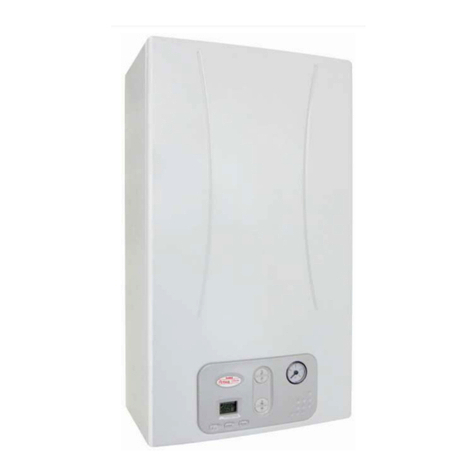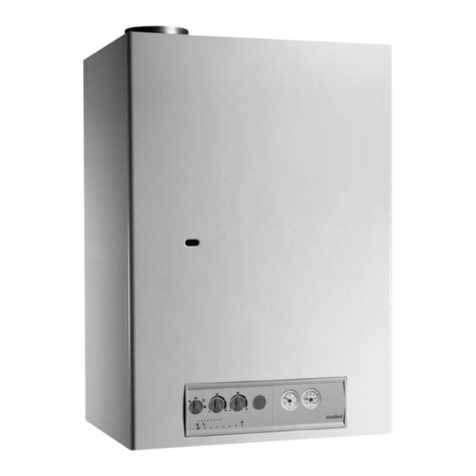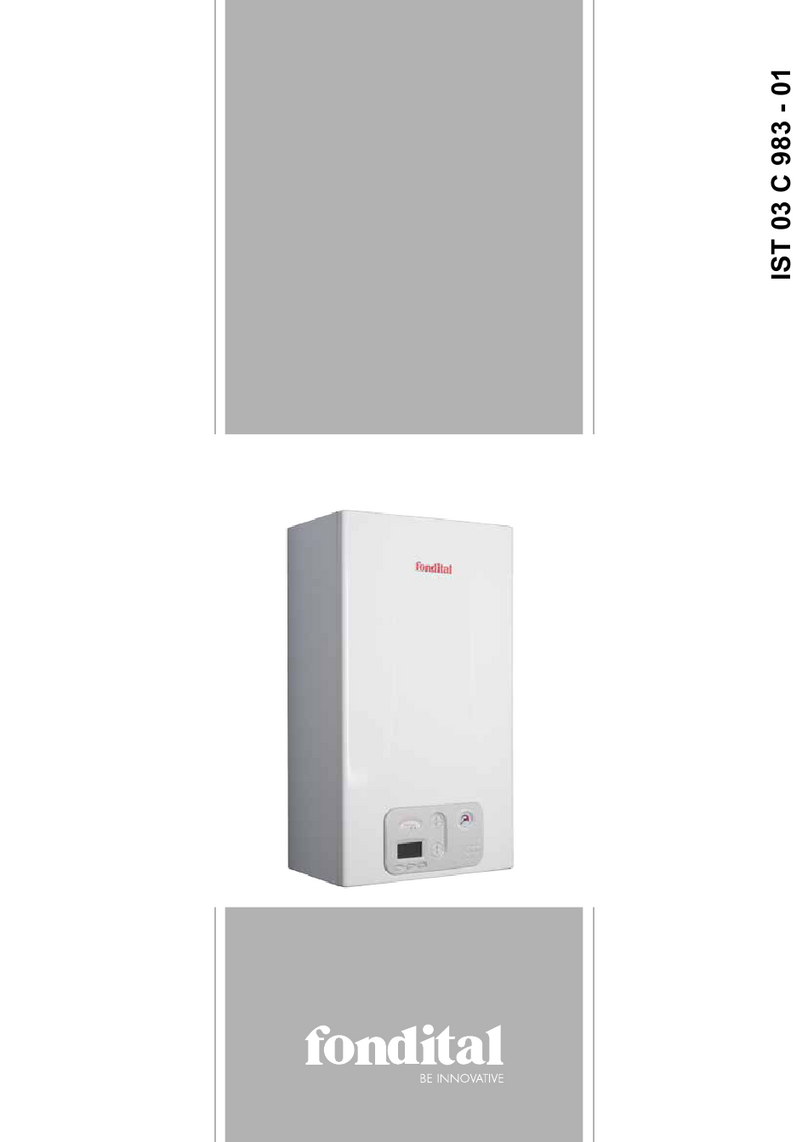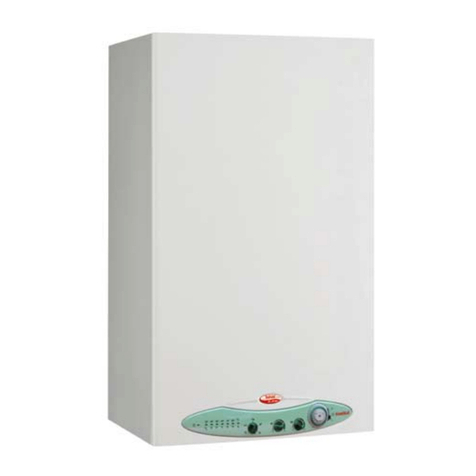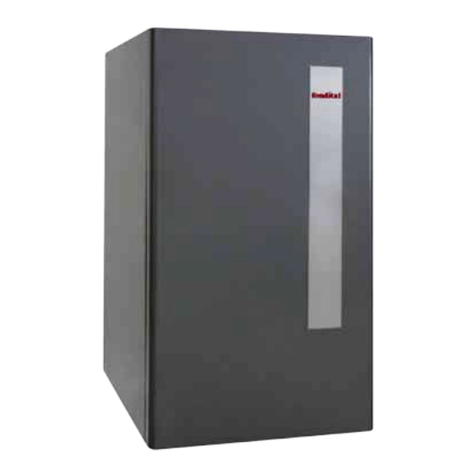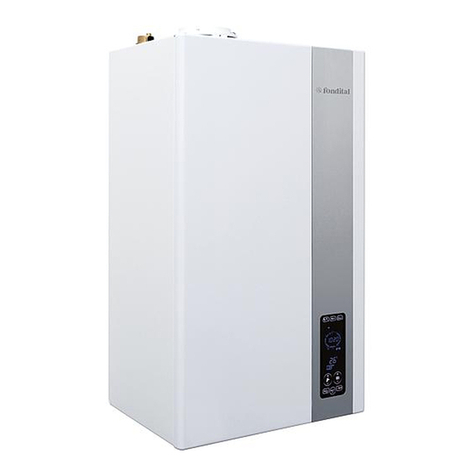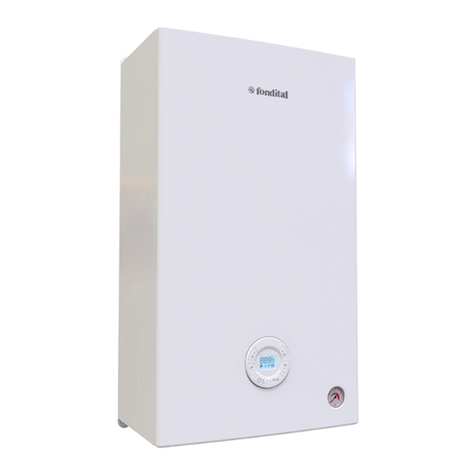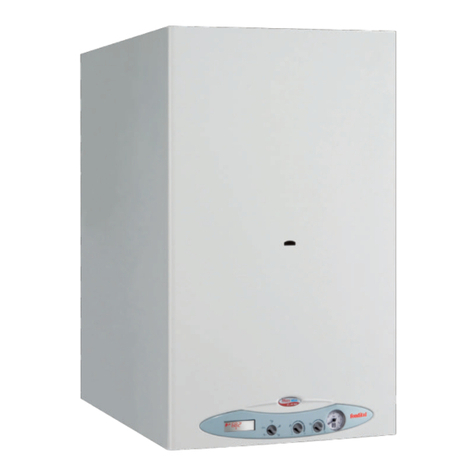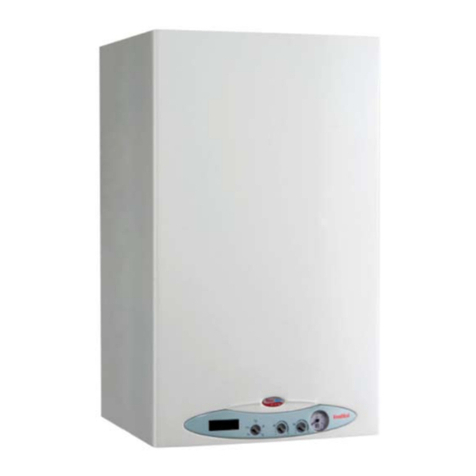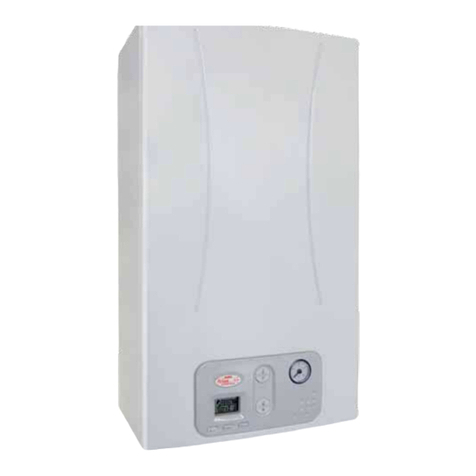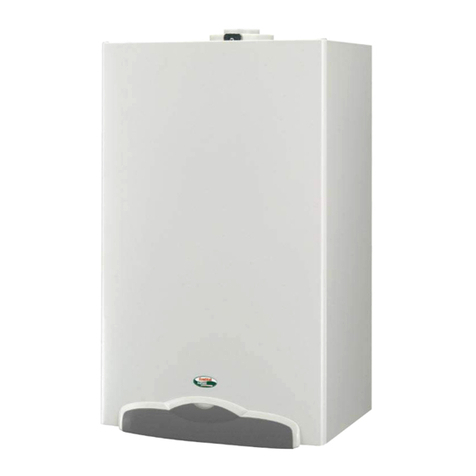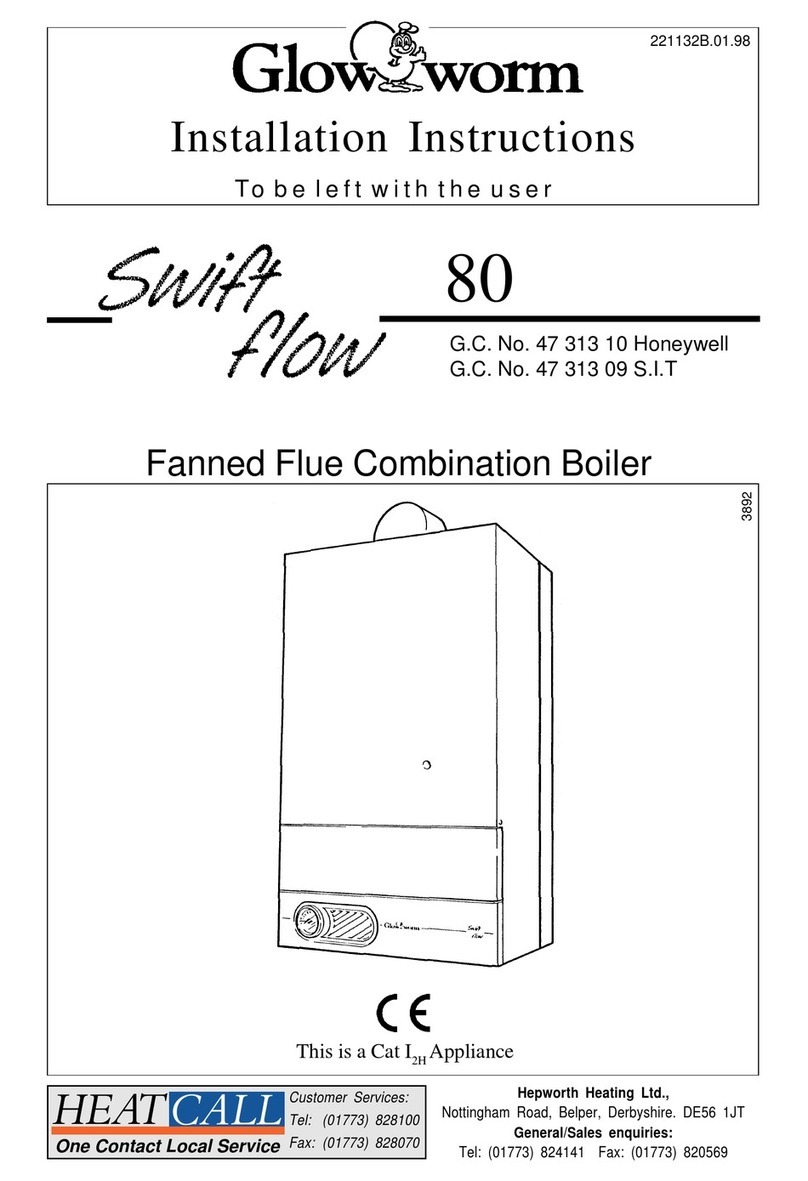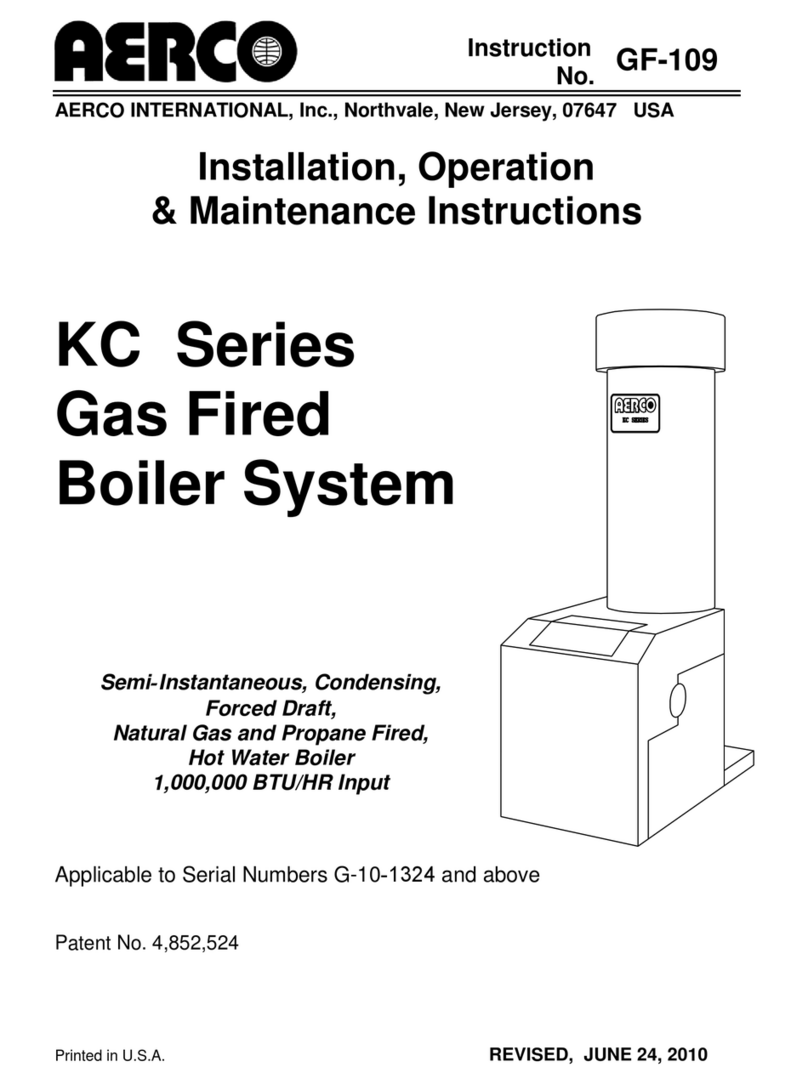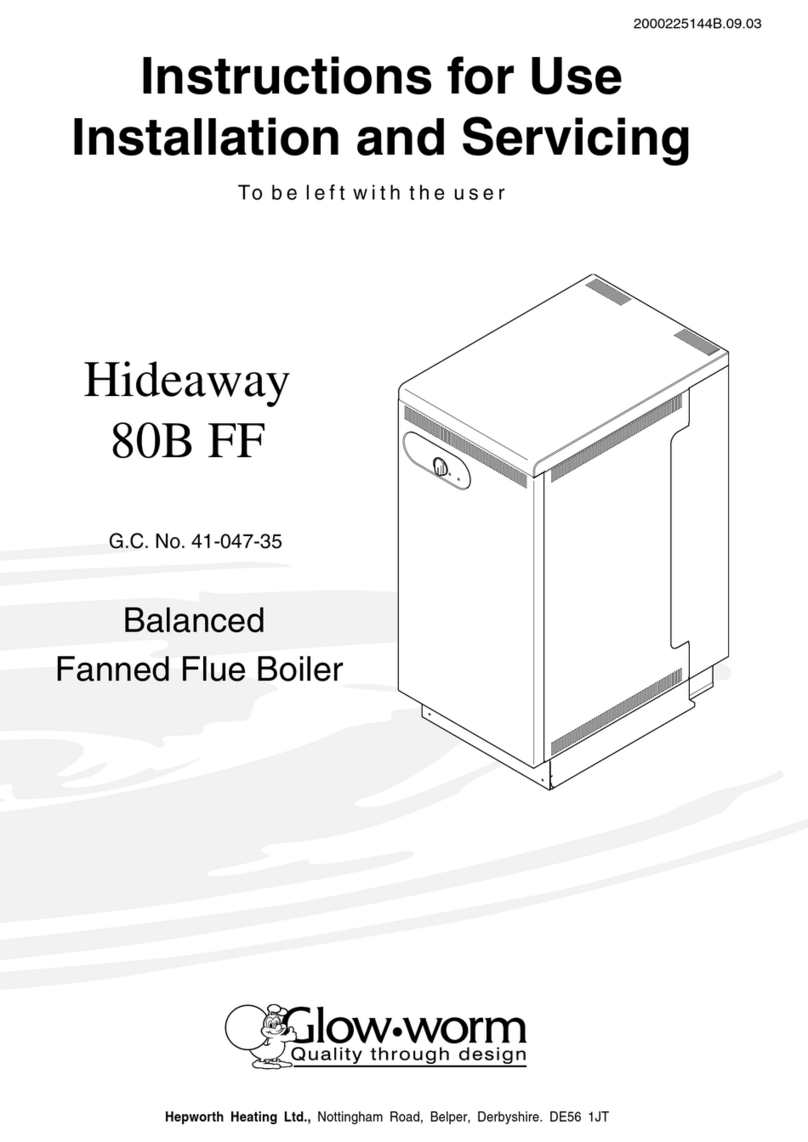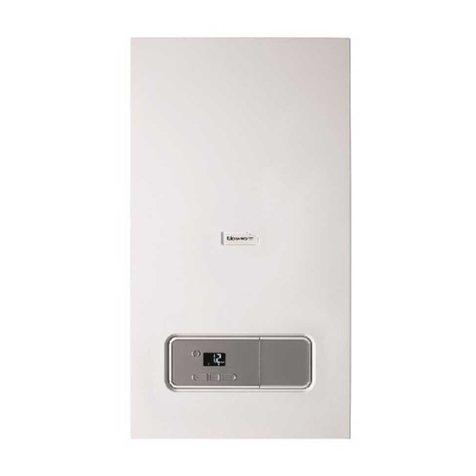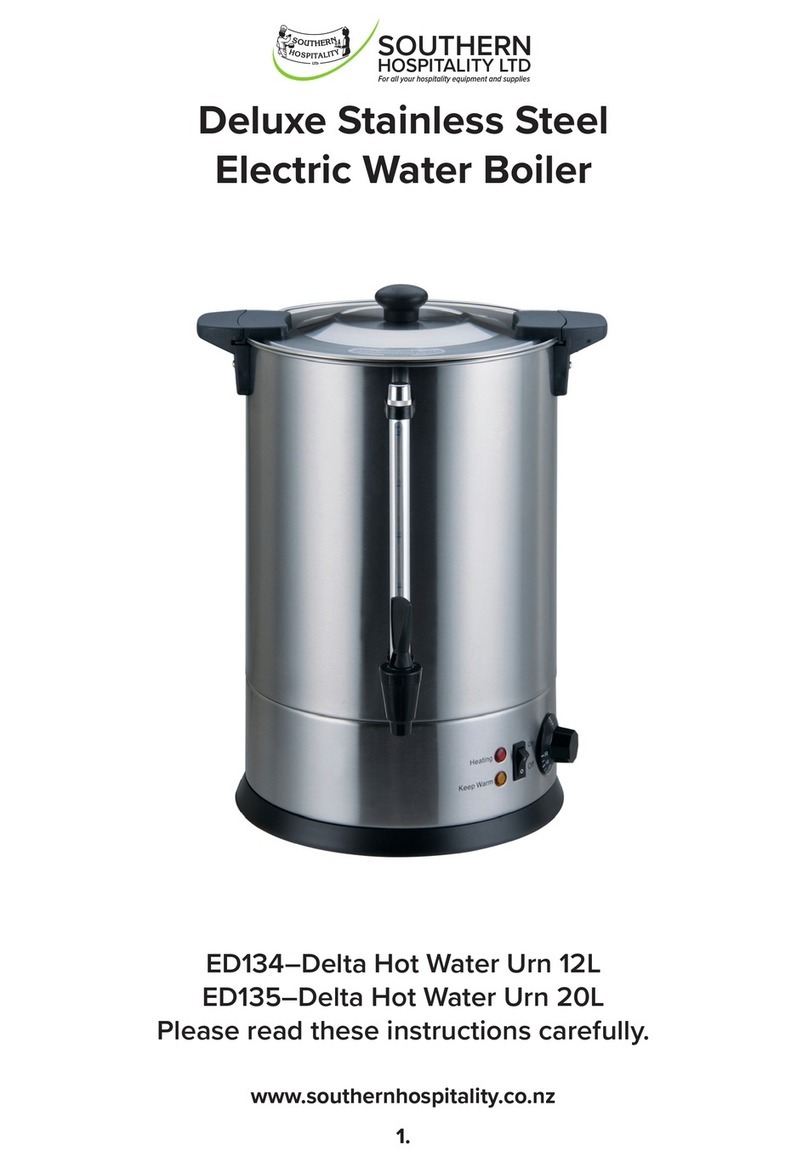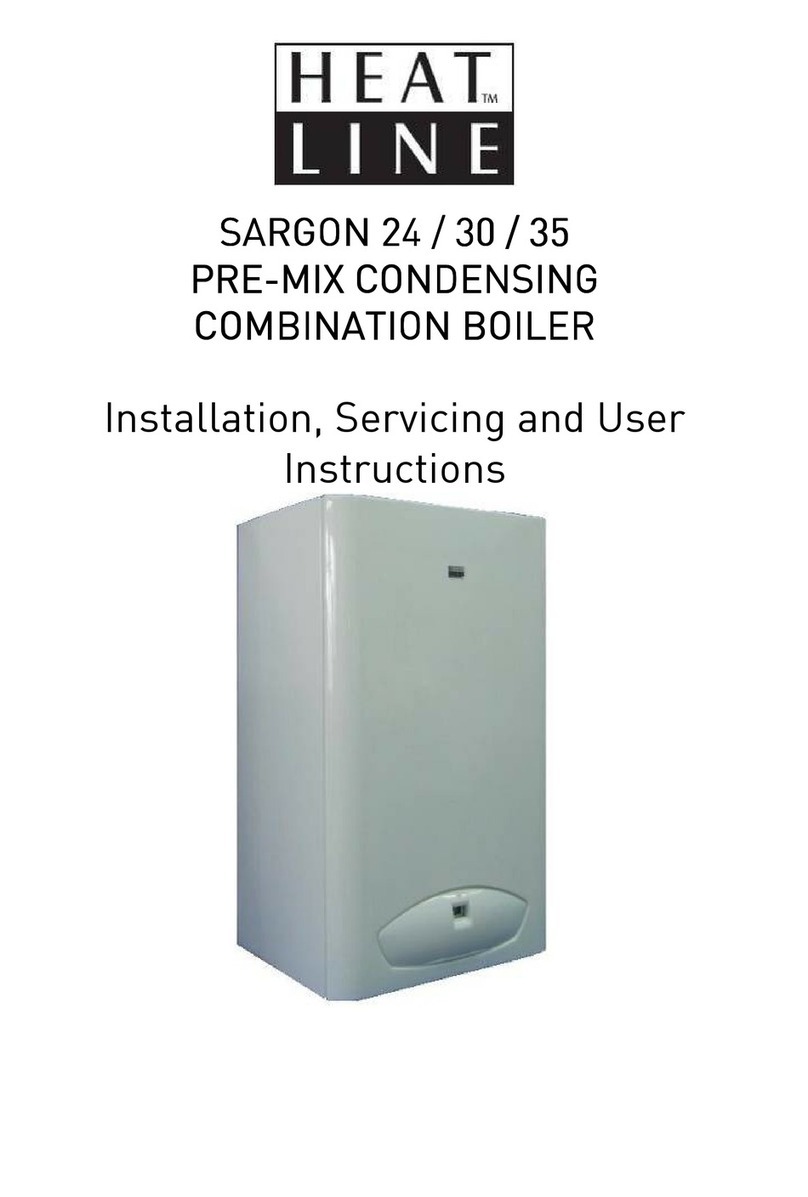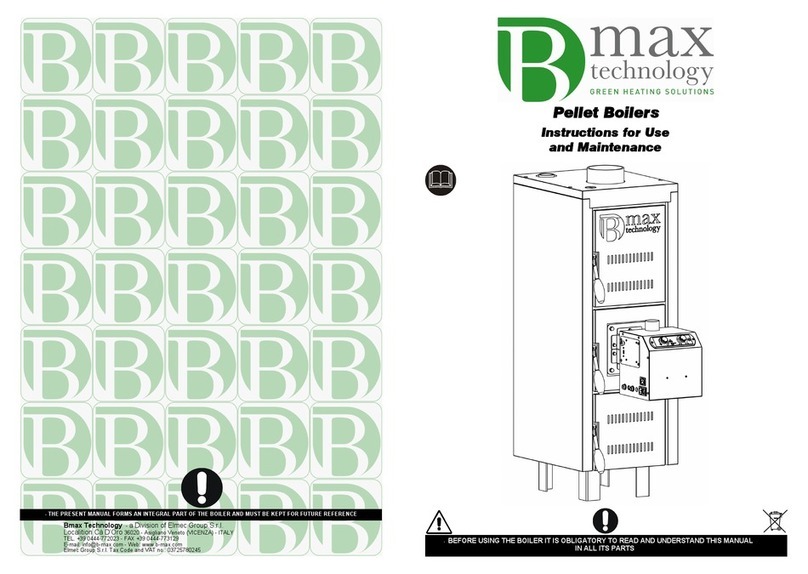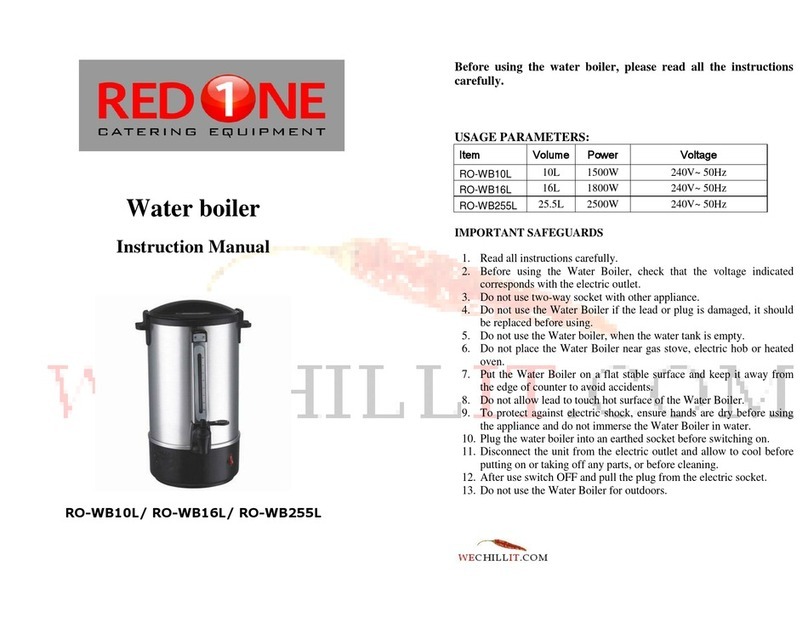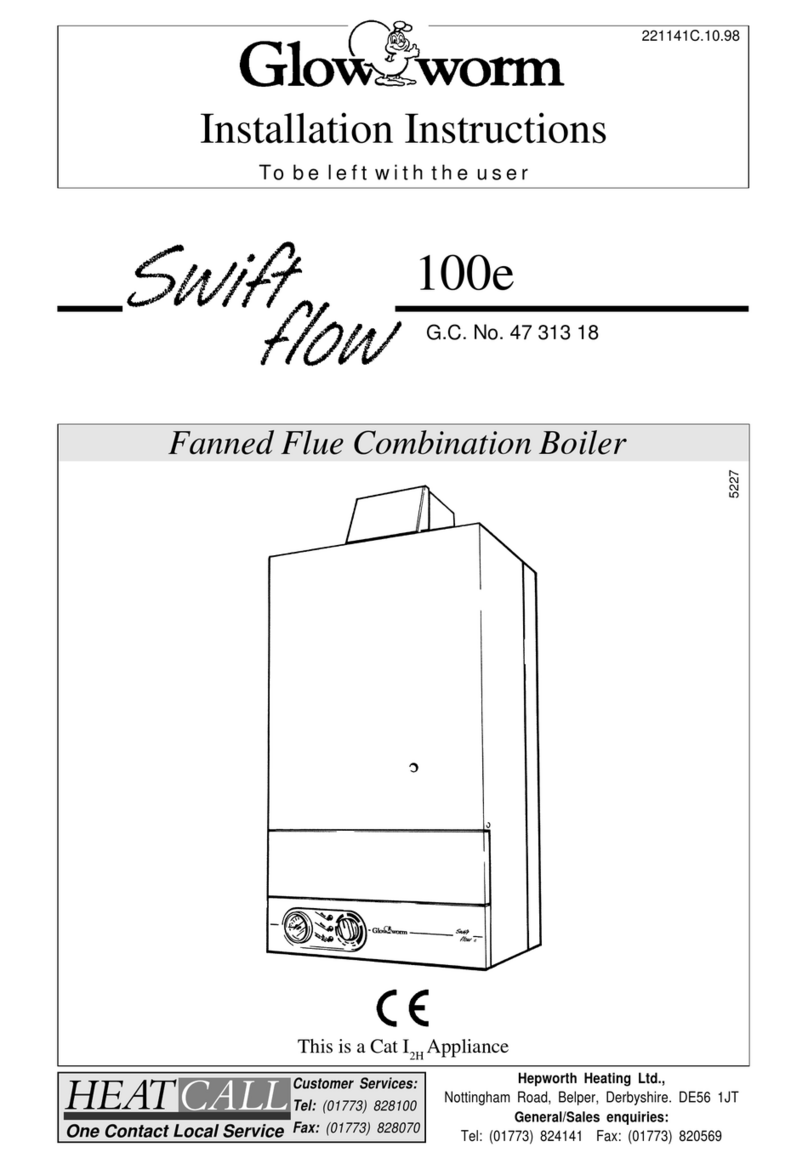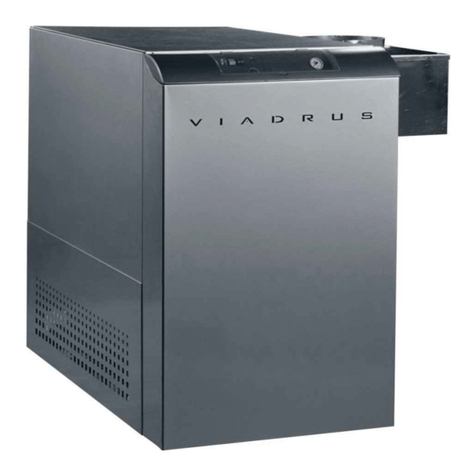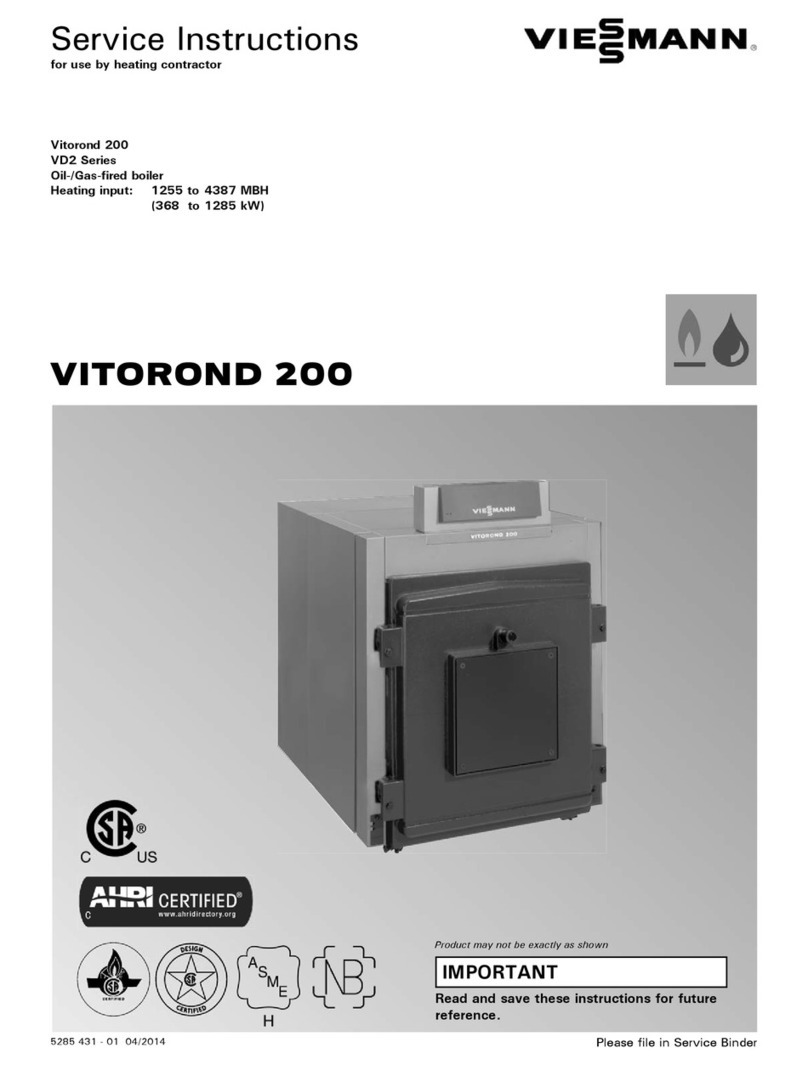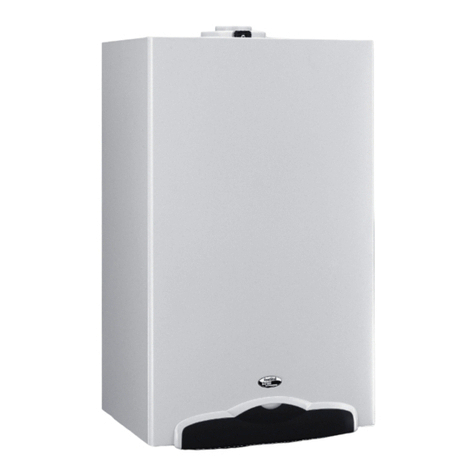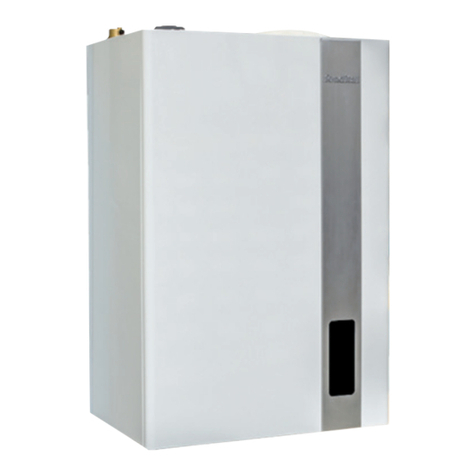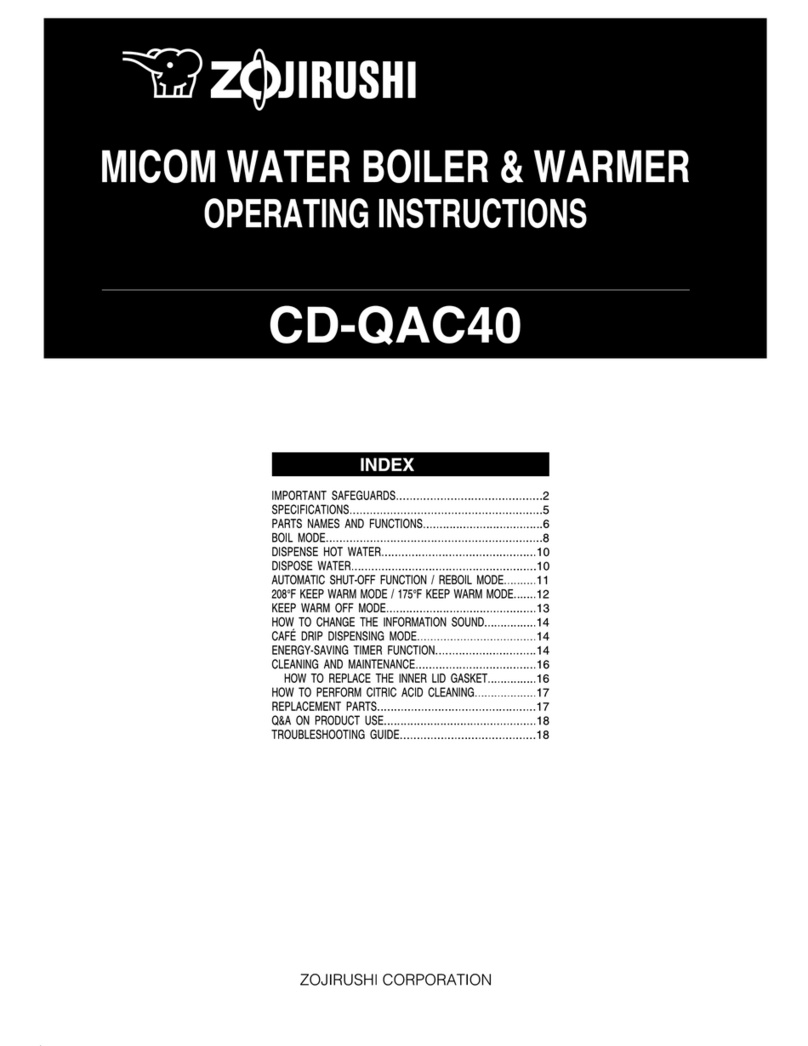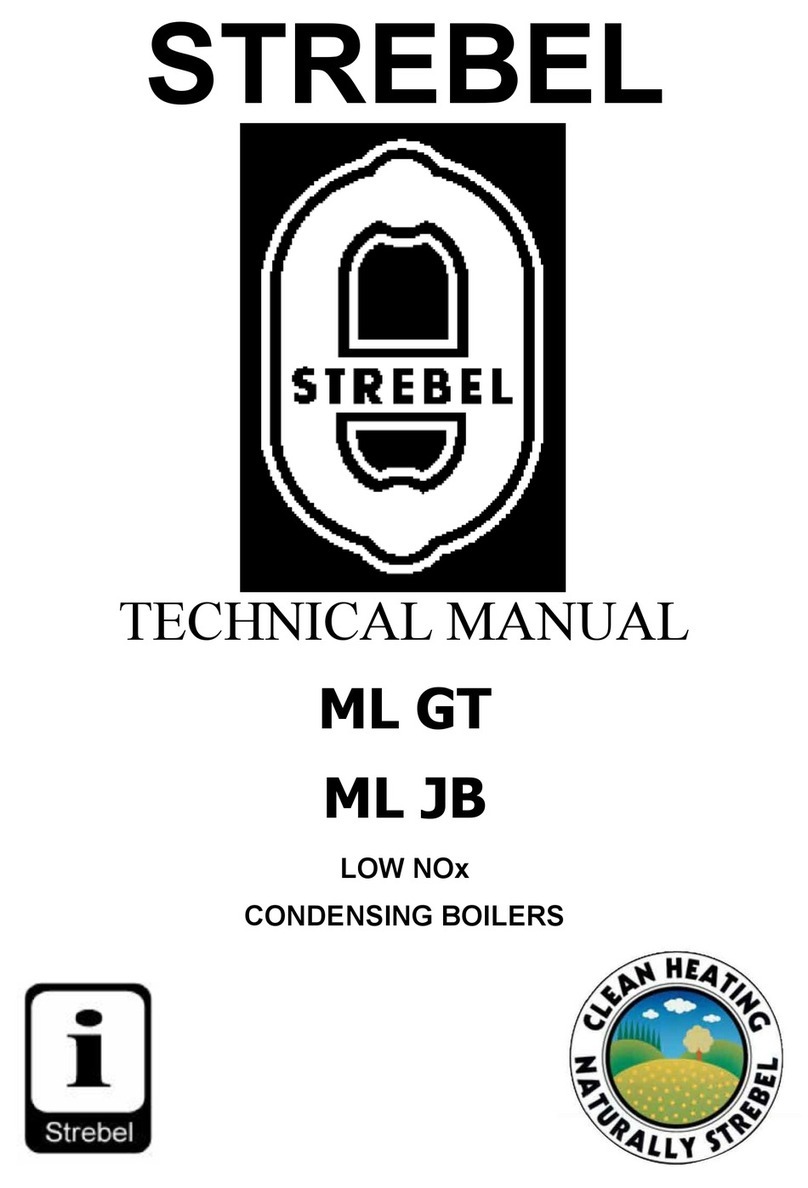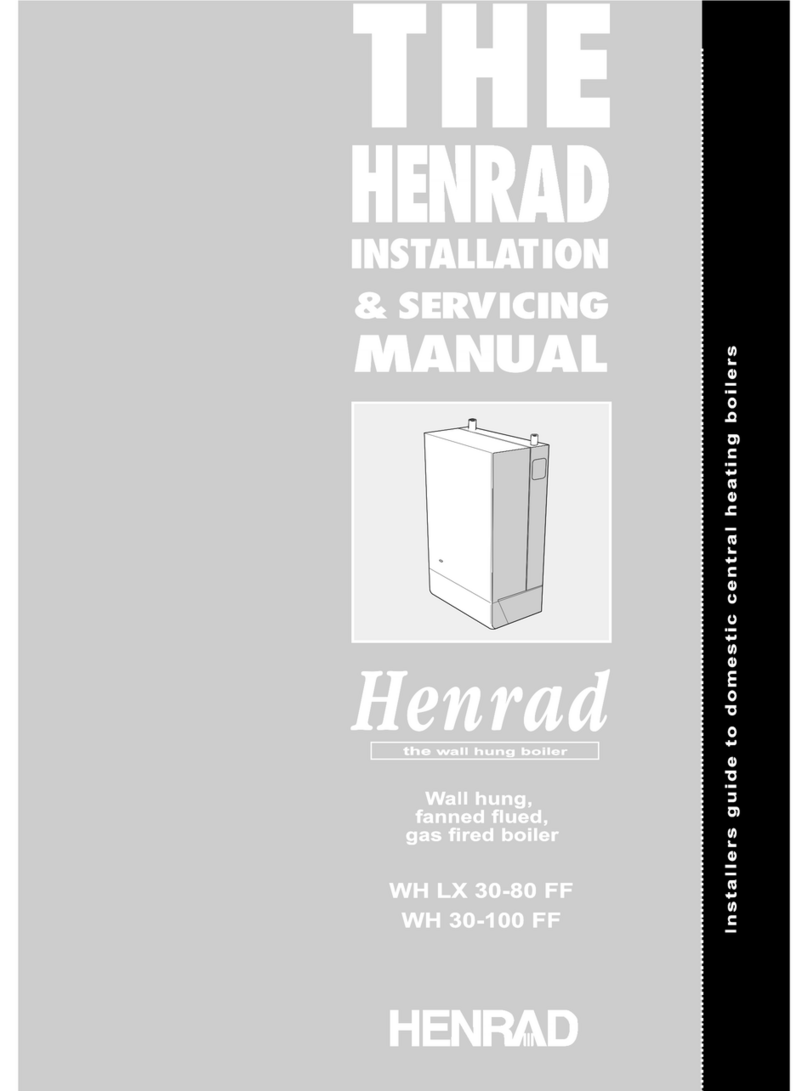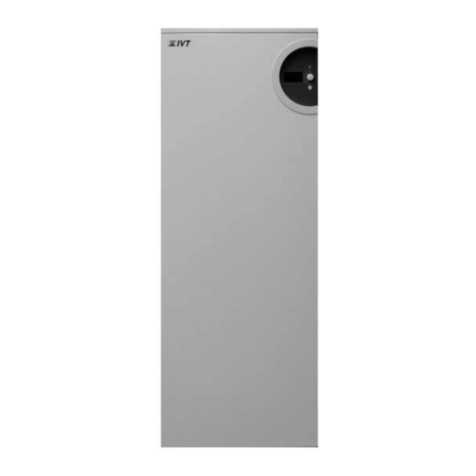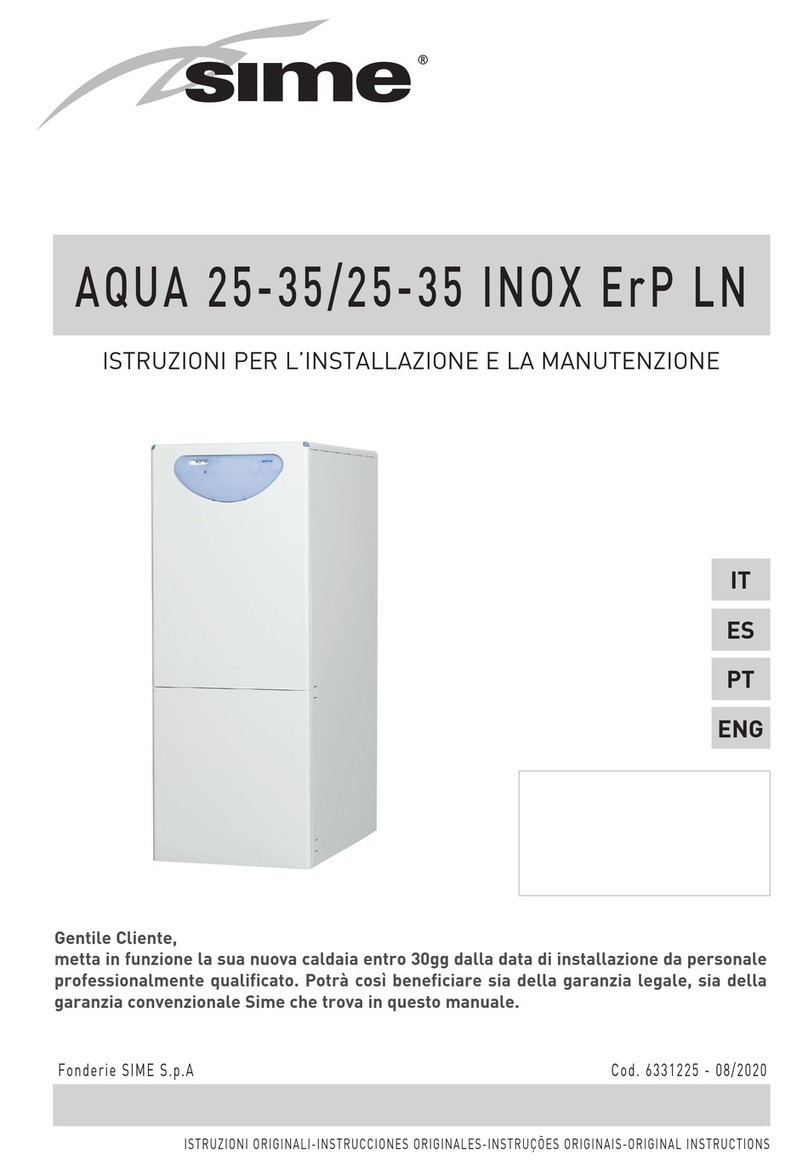11
3.1 Installation regulations
This is a heating unit which must be installed pursuant to applica-
ble standards and laws, which should be taken as incorporated in
full in this manual.
3.2 Installation
3.2.1 Packaging
The unit is packed and delivered in a wooden crate on pallets.
Once the boiler has been removed from its crate, check that it
is intact. The packaging material can be recycled and it must be
disposed of accordingly.
Keep the packaging out of the reach of children as it represen-
ts a choking and suffocation hazard. The manufacturer waives all
liability for injury to persons and animals or damage to property
resulting from non-observance of the above.
The packaging contains:
a) installation, use and maintenance handbook,
b) four screw-adjusting legs,
c) fuel oil lter, hose pipes and ttings for the burner supply.
3.2.2 Choosing where to install the heating unit
When choosing the position of the heating unit please take into
account the following:
- when installing the heating unit in a kitchen (the height of the
boiler is 850 mm, like most kitchen appliances) always provide
the possibility to access it from the upper side, in order to
simplify operations in case it is necessary to replace components
or make repairs;
- avoid installing the heating unit in wet or dusty atmospheres.
3.2.3 Installing the heating unit
Before connecting the boiler to the DHW and CH system pipes,
carefully clean the pipes to remove all traces of metal resulting
from processing and welding operations as well as any oil and
grease which could damage the boiler or jeopardise its operation.
ATTENTION
Do not use solvents which could damage the components.
The producer waives all liability for injury to persons and ani-
mals or damage to property resulting from non-observance of
the above.
After placing the heating unit in the boiler room, please proceed as
follows to install it:
- Remove the front panel.
- Unscrew the two front screws securing the base to the pallet (pic. 7).
- Raise the wooden panel to remove the heating unit as follows:
- insert two ropes or straps from front to rear under the frame
supporting the exchanger body; raise it taking care not to damage
hydraulic parts and lower it to the oor.
- Screw up the two adjustable supporting legs to align and stabilise
the unit.
- Connect the heating unit to the DHW and CH delivery and return
pipes.
- Join the unit to the chimney and to the air intake pipe (for D
versions).
- Connect the burner to the fuel oil supply pipes (see sub-section
3.2.4).
- Connect the unit to the power mains and to the room thermostat,
if any.
3.2.4 Connection to fuel oil mains supply
Refer to subsection 4.3 for the instructions on how to connect the
boiler to the fuel oil supply.
For heating units installed in areas that are particularly cold, use
fuel oil with a low content of parafns.
If necessary, install a supplementary oil pre-heating system.
It is compulsory to install the fuel oil filter included in the supply.
3.2.5 Ventilation
These heating units are designed for connection to a chimney. The
combustion air can be taken:
- directly from the room in which the unit is installed.
- from outdoor using 80mm-dia. pipes (version D, see subsection
3.2.7).
If the combustion air is taken from the room where it is instal-
led, this must comply with applicable standards and laws
which should be taken as incorporated in full in this manual.
3.2.6 Air intake and flue gas discharge pipes
It is mandatory to comply with all applicable standards and laws
relating to the emission of ue gas, which should be taken as in-
corporated in full in this manual.
The ue gas discharge pipes in the heating system have the
following diameter:
- for connections to 150 mm diameter ducts (versions CTF; type
B23);
- for connections to 120 mm diameter ducts
(versions CTFD; type
B23; C53; C83).
CTF Version (type B23)
The ue gas pipes in version CTF type B23, must be connected to
a ue made in compliance with all applicable standards and laws,
which should be taken as incorporated in full in this manual.
The ue and gas pipes must comply with the following require-
ments:
- The diameter must not be less than the heat-exchanger
discharge pipe diameter. In the case of ue with a square or
rectangular cross section, the diameter must be 10% more than
the coupling diameter of the heat exchanger.
- The pipes must be made of waterproof material that is resistant
to ue gas temperature and acid condensate.
- They must have low thermal conductivity, good mechanical
resistance, perfect seal and correctly calculated height and cross
section.
- The ue must be positioned vertically with a constant cross
section without any chokes.
- The end section must ensure constant, efcient discharge of ue
gases in any atmospheric condition.
- The end section must project at least 50 cm from any adjacent
structure within a 5 metre radius.
3 INSTRUCTIONS FOR THE INSTALLER




















